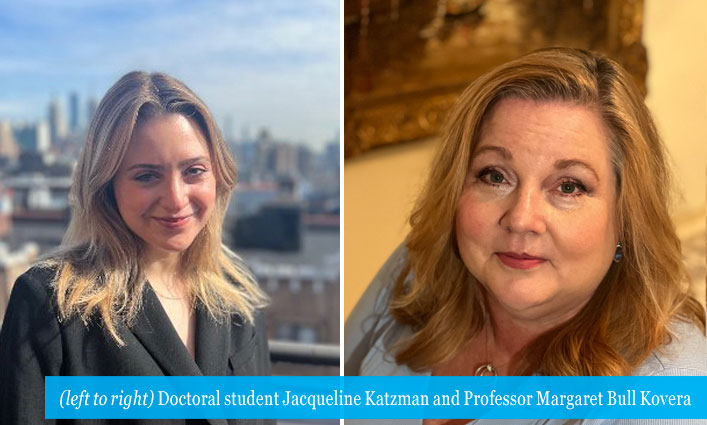
“Research sits at the core of our mission to educate for justice,” says President Karol V. Mason. Research performed by our faculty, students, and alumni impact our advocacy for a more just world. Our “Research on the Rise” series showcases their work.
Research by Margaret Bull Kovera, PhD, Professor of Psychology, and Jacqueline Katzman, doctoral student, suggests that police identification procedures can contribute to wrongful convictions.
“If you look at the wrongful conviction cases in which there was an eyewitness identification, those cases are three times more likely to involve Black defendants than white defendants,” explains Kovera. “The question is, why is this happening?”
The long-accepted answer has been eyewitness’s faulty memory. Kovera and Katzman explored another cause: police identification procedures. “Jackie and I looked at all the studies on the cross-race effect (Black on white/white on Black crime) and crimes within the same racial group. We learned that basically everybody—no matter the witness’s race—was bad at identifying Black people. That’s when we began to talk about the idea that eyewitness misidentifications are not just about memory but also how police decide to investigate their cases,” says Kovera. “Police have to decide when they are going to task a witness who saw the crime to make an identification and how much evidence they need to have against a suspect before placing them in an identification procedure.”
“Eyewitness misidentifications are not just about memory but also how police decide to investigate their cases.” —Margaret Bull Kovera
What led you to investigate the link between identification procedures and misidentifications?
Outside of academic work, I serve as an expert in court. I noticed that there were a lot of cases, especially with young Black men, where during the investigation phase police said “We have no leads, but there’s this kid in the neighborhood who sort of fits the description of the suspect. Let’s put him in the lineup.” When you do that, there’s no connection between the young man in the lineup and the crime, the likelihood that he’s innocent is high, and police expect that the witness’s memory will fix it. The problem is we know that witnesses make mistakes.
Does law enforcement need to meet a standard of evidence before placing someone in a lineup?
There are no rules or guidelines on the amount of evidence law enforcement needs, if any, before they decide who to subject to identification procedures. If you look at all the identification procedures done for Black men, the ratio of innocent suspects to guilty suspects is greater than for white suspects. The difference can be merely that the police require more evidence connecting a white suspect to a crime before subjecting them to identification procedures. With a Black suspect, they may not require as much evidence.
“If there is no actual evidence tying a person to a crime, do not include them in a lineup.” —Margaret Bull Kovera
What do you want people to learn from your study?
The biggest takeaway point is that witness memory is not going to correct policing mistakes—and this is for all cases, guilty suspects with a lot of evidence against them and innocent suspects with no evidence tying them to the case.
If there is no actual evidence tying a person to a crime, do not include them in a lineup. When you put innocent people in lineups, you’re going to increase the rates of mistaken identifications. Every time you imprison an innocent person, you let a guilty person get away. This ties into public safety and building safer communities. I try to remind people, it’s not just about freeing the innocent and making sure innocent people aren’t getting wrongfully convicted. It’s also about getting the guilty person and making sure justice is served.



